Adrian Kliks
Institute of Radiocommunications, Poznan University of Technology, Poznan, Poland, Rimedo Labs, Poznan, Poland
Enhancing V2X Communications with UAV-mounted Reconfigurable Intelligent Surfaces
Mar 24, 2025Abstract:This paper addresses the crucial need for reliable wireless communication in vehicular networks, particularly vital for the safety and efficacy of (semi-)autonomous driving amid increasing traffic. We explore the use of Reconfigurable Intelligent Surfaces (RISes) mounted on Drone Relay Stations (DRS) to enhance communication reliability. Our study formulates an optimization problem to pinpoint the optimal location and orientation of the DRS, thereby creating an additional propagation path for vehicle-to-everything (V2X) communications. We introduce a heuristic approach that combines trajectory optimization for DRS positioning and a Q-learning scheme for RIS orientation. Our results not only confirm the convergence of the Q-learning algorithm but also demonstrate significant communication improvements achieved by integrating a DRS into V2X networks.
* The contribution of the paper was presented during the 22nd IEEE International Conference on Pervasive Computing and Communications Workshops and other Affiliated Events, PerCom Workshops 2024 by the IEEE
Signal Propagation in RIS-Aided 5G Systems
Mar 24, 2025Abstract:In this paper, we conduct an in-depth analysis of radio signal propagation characteristics within the urban environment of Poznan (Poland). The study specifically addresses the deployment of a 5th generation (5G NR - New Radio) Radio Access Network (RAN), which comprises 8 strategically positioned Base Stations (BSs). These base stations are configured with either Single Input Single Output (SISO) or Multiple Input Multiple Output (MIMO) antenna technologies, contingent upon the specific requirements of the network cells they serve. A key focus of our research is the integration of 15 reflecting arrays, known as Reconfigurable Intelligent Surfaces (RISs), which were installed throughout the study area. These RISs were deployed at various suspension heights to evaluate their impact on radio signal propagation and coverage. By exploring the influence of these RIS matrices, our research sheds light on their potential to significantly enhance signal quality, particularly in urban environments.
Large-Scale AI in Telecom: Charting the Roadmap for Innovation, Scalability, and Enhanced Digital Experiences
Mar 06, 2025Abstract:This white paper discusses the role of large-scale AI in the telecommunications industry, with a specific focus on the potential of generative AI to revolutionize network functions and user experiences, especially in the context of 6G systems. It highlights the development and deployment of Large Telecom Models (LTMs), which are tailored AI models designed to address the complex challenges faced by modern telecom networks. The paper covers a wide range of topics, from the architecture and deployment strategies of LTMs to their applications in network management, resource allocation, and optimization. It also explores the regulatory, ethical, and standardization considerations for LTMs, offering insights into their future integration into telecom infrastructure. The goal is to provide a comprehensive roadmap for the adoption of LTMs to enhance scalability, performance, and user-centric innovation in telecom networks.
5G Networks Supported by UAVs, RESs, and RISs
Mar 18, 2024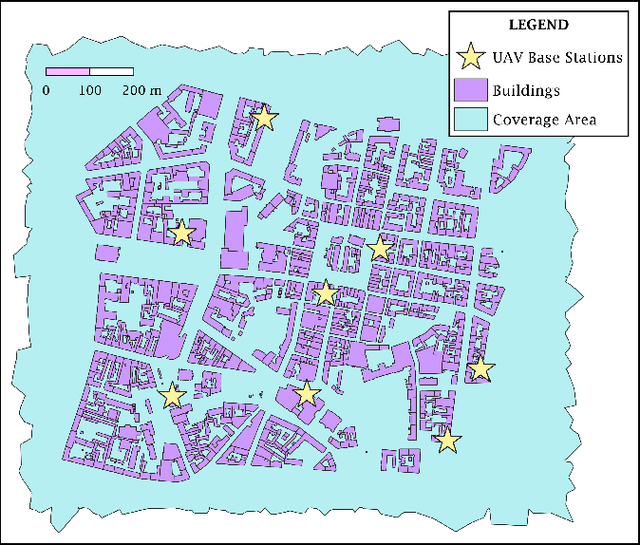
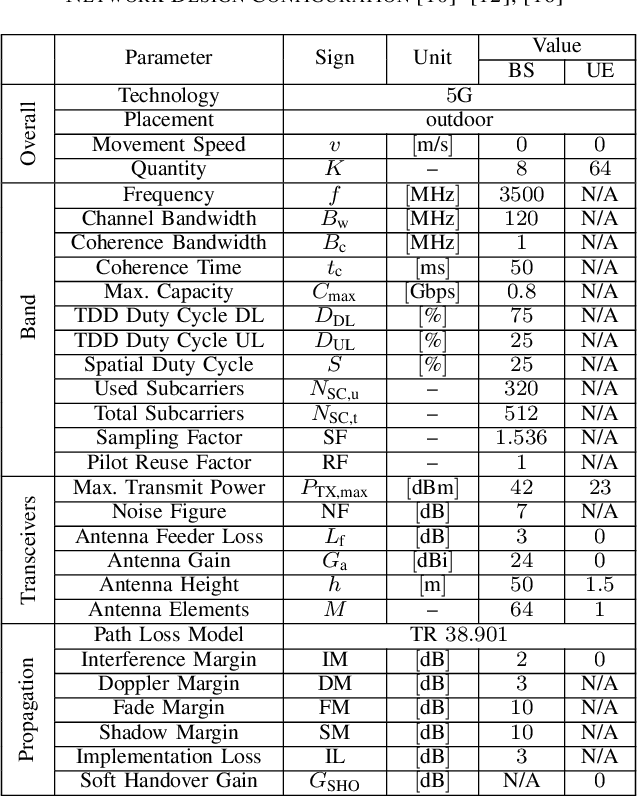
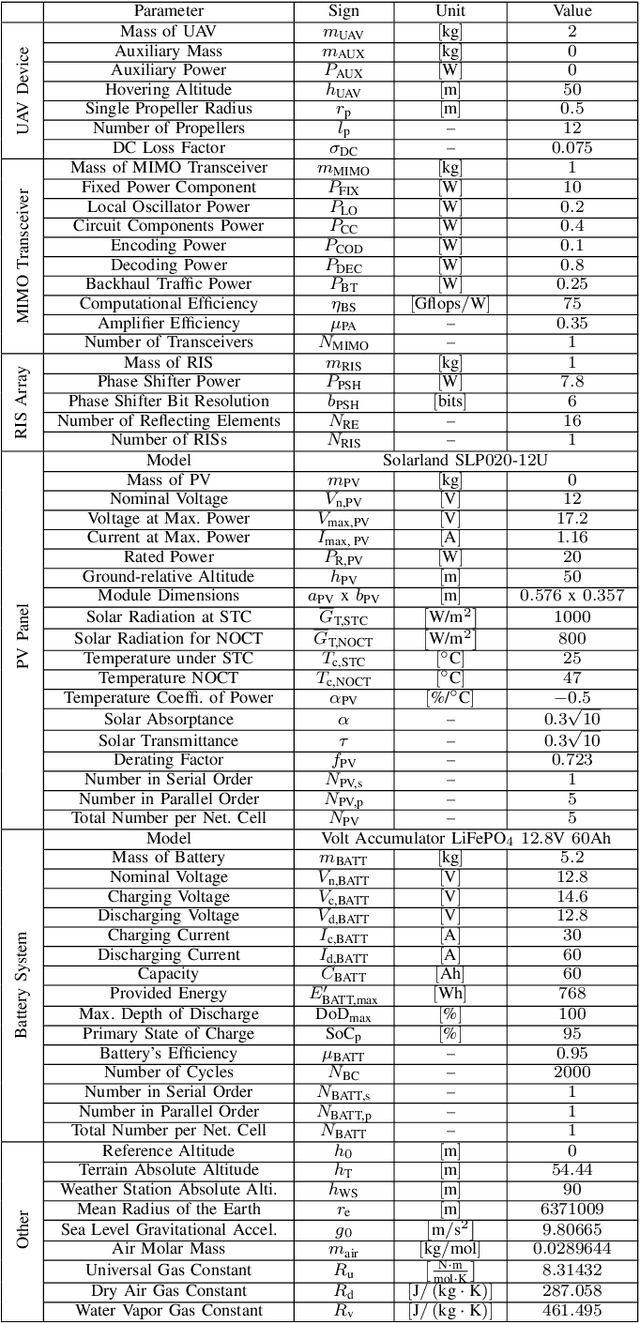
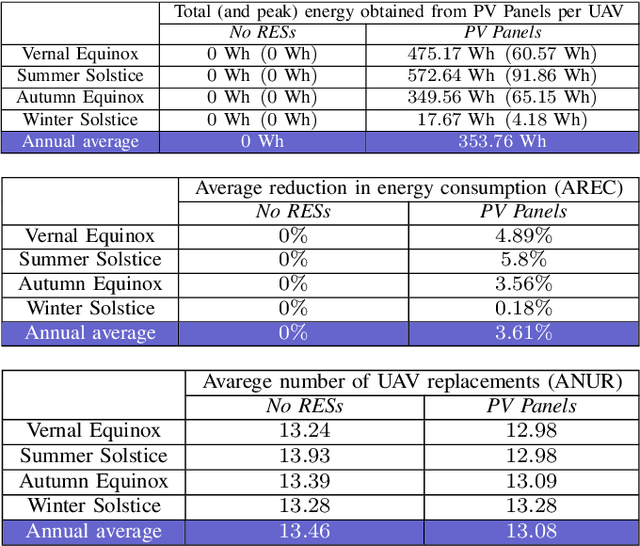
Abstract:This paper presents the examination of the 5G cellular network aware of Renewable Energy Sources (RESs) and supported by Reconfigurable Intelligent Surfaces (RISs) and Unmanned Aerial Vehicles working as mobile access nodes. The investigations have been focused on the energy side of the Radio Access Network (RAN) placed within the area of the city of Poznan (Poland). The gain related to enabling RES generators, i.e., photovoltaic (PV) panels, for base stations (BSs) was presented in the form of two factors -- the average number of UAV replacements (ANUR) with a fully charged one to ensure continuous access to mobile services for currently served user equipment (UE) terminals, and the average reduction in energy consumption (AREC) within the whole network.
* arXiv admin note: substantial text overlap with arXiv:2403.12283
Wykorzystanie rekonfigurowalnych matryc antenowych wraz z informacją kontekstową
Feb 27, 2024Abstract:Reconfigurable intelligent surfaces can be successfully used to control the radio environment. Simple control of the reflection angle of the signal from the surface allows maximization or minimization of the received power in specific places. The paper presents simulations where it is possible to receive a signal in a place where it was not possible, to detect the occupancy of the spectrum in a place where the sensor was unable to make correct detection or to minimize interference in a specific receiver.
Machine Learning-based xApp for Dynamic Resource Allocation in O-RAN Networks
Jan 15, 2024Abstract:The disaggregated, distributed and virtualised implementation of radio access networks allows for dynamic resource allocation. These attributes can be realised by virtue of the Open Radio Access Networks (O-RAN) architecture. In this article, we tackle the issue of dynamic resource allocation using a data-driven approach by employing Machine Learning (ML). We present an xApp-based implementation for the proposed ML algorithm. The core aim of this work is to optimise resource allocation and fulfil Service Level Specifications (SLS). This is accomplished by dynamically adjusting the allocation of Physical Resource Blocks (PRBs) based on traffic demand and Quality of Service (QoS) requirements. The proposed ML model effectively selects the best allocation policy for each base station and enhances the performance of scheduler functionality in O-RAN - Distributed Unit (O-DU). We show that an xApp implementing the Random Forest Classifier can yield high (85\%) performance accuracy for optimal policy selection. This can be attained using the O-RAN instance state input parameters over a short training duration.
Federated Learning-Based Interference Modeling for Vehicular Dynamic Spectrum Access
Oct 03, 2022



Abstract:A platoon-based driving is a technology allowing vehicles to follow each other at close distances to, e.g., save fuel. However, it requires reliable wireless communications to adjust their speeds. Recent studies have shown that the frequency band dedicated for vehicle-to-vehicle communications can be too busy for intra-platoon communications. Thus it is reasonable to use additional spectrum resources, of low occupancy, i.e., secondary spectrum channels. The challenge is to model the interference in those channels to enable proper channel selection. In this paper, we propose a two-layered Radio Environment Map (REM) that aims at providing platoons with accurate location-dependent interference models by using the Federated Learning approach. Each platoon is equipped with a Local REM that is updated on the basis of raw interference samples and previous interference model stored in the Global REM. The model in global REM is obtained by merging models reported by platoons. The nodes exchange only parameters of interference models, reducing the required control channel capacity. Moreover, in the proposed architecture platoon can utilize Local REM to predict channel occupancy, even when the connection to the Global REM is temporarily unavailable. The proposed system is validated via computer simulations considering non-trivial interference patterns.
Neural Networks for Path Planning
Jul 02, 2022


Abstract:The scientific community is able to present a new set of solutions to practical problems that substantially improve the performance of modern technology in terms of efficiency and speed of computation due to the advancement in neural networks architectures. We present the latest works considering the utilization of neural networks in robot path planning. Our survey shows the contrast between different formulations of the problems that consider different inputs, outputs, and environments and how different neural networks architectures are able to provide solutions to all of the presented problems.
Energy-efficient User Clustering for UAV-enabled Wireless Networks Using EM Algorithm
Jul 02, 2022



Abstract:Unmanned Aerial Vehicles (UAVs) can be used to provide wireless connectivity to support the existing infrastructure in hot-spots or replace it in cases of destruction. UAV-enabled wireless provides several advantages in network performance due to drone small cells (DSCs) mobility despite the limited onboard energy. However, the problem of resource allocation has added complexity. In this paper, we propose an energy-efficient user clustering mechanism based on Gaussian mixture models (GMM) using a modified Expected-Maximization (EM) algorithm. The algorithm is intended to provide the initial user clustering and drone deployment upon which additional mechanisms can be employed to further enhance the system performance. The proposed algorithm improves the energy efficiency of the system by 25% and link reliability by 18.3% compared to other baseline methods.
On the Placement and Sustainability of Drone FSO Backhaul Relays
May 30, 2022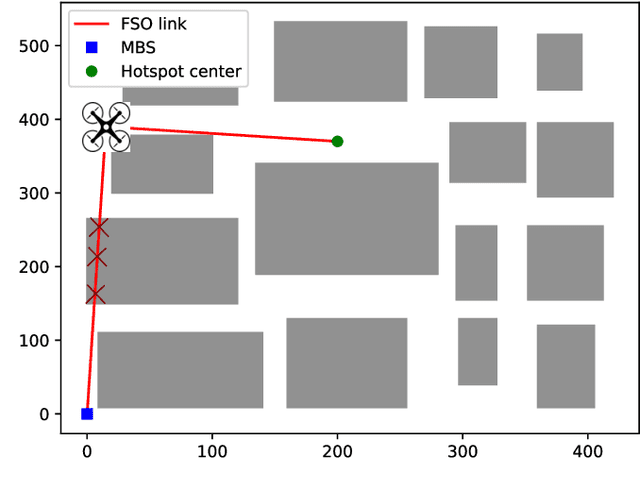
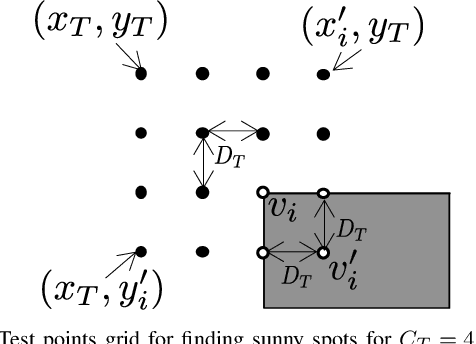
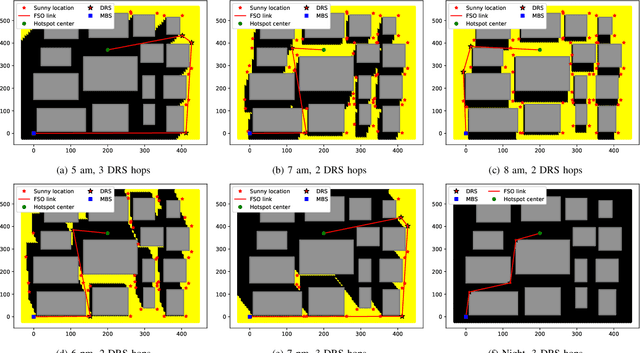

Abstract:We consider free-space optical (FSO) communication links for the backhaul connectivity of small cells (SCs) where a UAV with an FSO apparatus can serve as a backhaul relay node. We demonstrate how such drone relay stations (DRSs) can be deployed in a high-rise urban area in order to provide FSO line-of-sight (LOS) links that are unobstructed by buildings. Also, in our solution we consider the case where solar panels are mounted on DRSs such that placing the DRS in a sunny location is prioritized, and we show the gain in terms of number of required trips to recharge the UAV.
 Add to Chrome
Add to Chrome Add to Firefox
Add to Firefox Add to Edge
Add to Edge